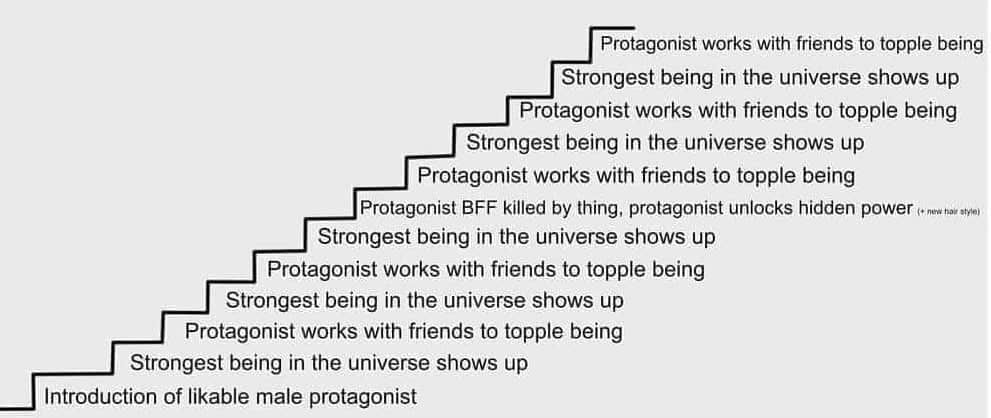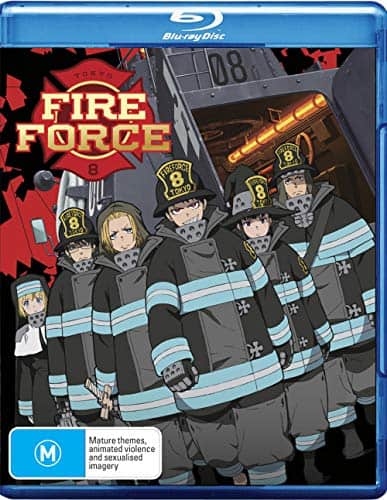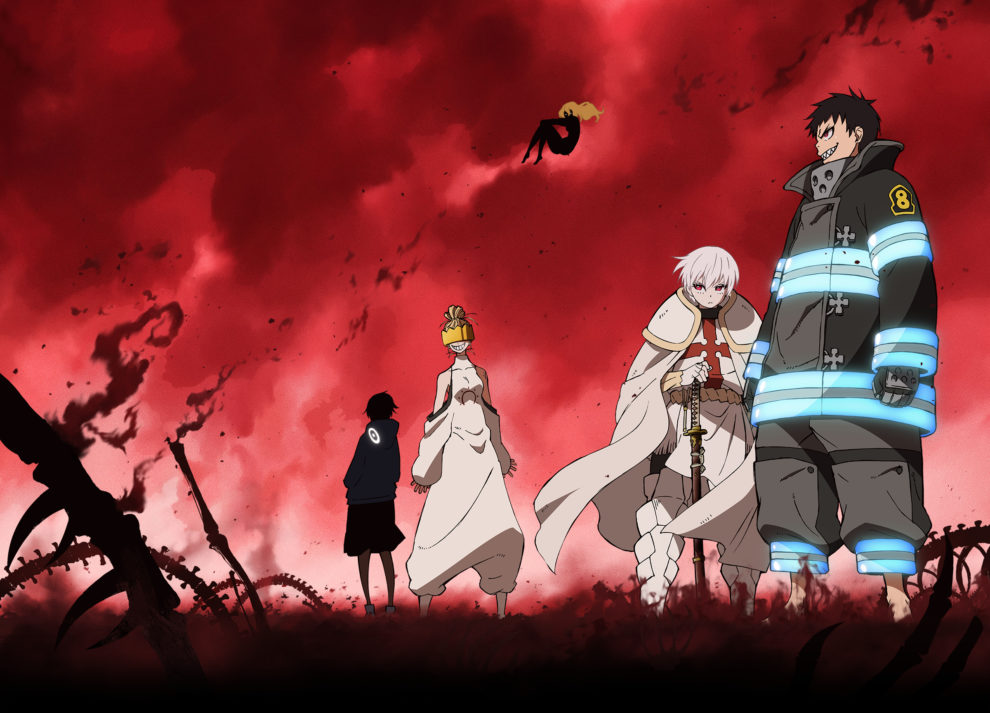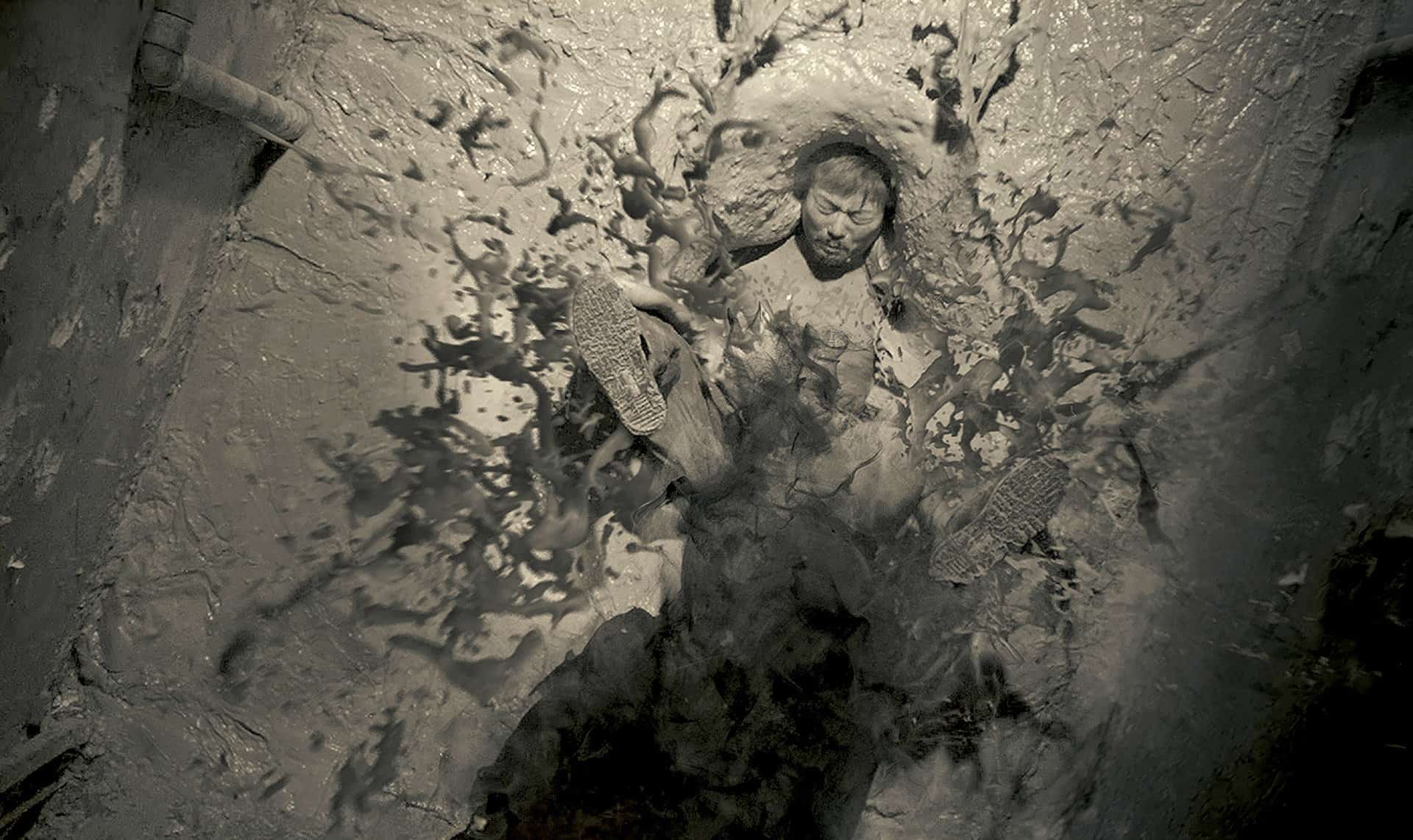As we have mentioned many times before, shonen titles are found in abundance in the anime industry, with most of them following the pattern of “Dragonball”, “Bleach” and “Naruto”, which, in essence, and with a healthy dose of cynicism, is this one.

The result is that many of them look and function in very similar ways, with very few exceptions, which we will deal with in a separate article. “Fire Force” may be quite well produced, but in terms of narrative, does not stray particularly away.
The Great Disaster is an event that happened two hundred and fifty years before Year 198, with the world mostly consumed in flames, many nations destroyed, and most of the planet rendered uninhabitable. The survivors took refuge in the Tokyo Empire, which remained mostly stable during the period despite losing some of its landmass.The Tokyo Emperor Raffles I establishes the faith of the Holy Sol Temple as it and Haijima Industries developed the perpetual thermal energy plant Amaterasu to power the country. In Year 198 of Tokyo's Solar Era, special fire brigades called the Fire Force fight increasing incidents of spontaneous human combustion where human beings are turned into living infernos called “Infernals”). While the Infernals are first generation cases of spontaneous human combustion, with more powerful horned variations known as Demons, later generations possess pyrokinesis while retaining human form. The Fire Force was formed by combining people with these powers from the Holy Sol Temple, The Tokyo Armed Forces, and the Fire Defense Agency, and is composed of eight independent companies.
Buy This Title

As the story begins, we are introduced to Shinra Kusakabe, an orphan who lost his family in a mysterious fire when he was child, with the exception of his baby brother, who was kidnapped. Shinra is also a third generation pyrokinetic youth who gained the nickname “Devil's Footprints” for his ability to ignite his feet at will, but also due to a constant smile that has made others misunderstand him but is actually just a reaction for when he is being nervous. He joins Special Fire Force Company 8, which features other pyrokinetics who have dedicated themselves to ending the Infernal attacks for good while investigating Companies 1 through 7 for potential corruption in their ranks.
Shinra begins to learn that his younger brother's abduction during the fire that killed their mother 12 years ago is caused by a mysterious doomsday cult that is behind the Infernal attacks, named the White Cloaks, who operate under a mysterious entity called the Evangelist. Company 8 and their allies oppose the White Cloaks and their Knights of the Ashen Flame.
The narrative follows the typical development of the shonen category, starting with the villain of the week, some of which eventually become allies and the many introductions of new, and usually more powerful characters, both good and villains. Shinra finds his friendly rival in Arthur, an equally strong youth with the delusion of being a knight king, which also adds much to the comedy-goofiness aspect of the series. In Akitaru, the leader of company 8, he fights a mentor and an example of a man, particularly since the chief is a man with no fire powers, who uses just his brute strength and his constant training as his weapons (yes, like Rock Lee). Takahisa Hinawa , the lieutenant, is the epitome of the chaotic good with his strictness for rules, although eventually he is revealed as a real nice guy. Maki, a brute with an appearance complex that always misunderstand others, Iris, a priestess with a traumatic background that eventually becomes the catalyst in turning an enemy into an ally, and Tamaki, conclude the group. Later on, we are also introduced to Princess Hibana, whose experiments promote the main story while she is also the main source of fanservice along with Tamaki. As usually, the season ends up with a prolonged fight sequence that levels up the main characters but creates more questions and loose ends than it solves.
Despite the rather usual premises, there are enough interesting characters here to retain interest, while the way the various mysteries and conspiracies unfold are intriguing, and actually extend to various levels. The creator of the manga. Atsushi Okubo, makes a comment about the connection of the church with a major company, although the setting that eventually becomes somewhat biblical, tones down its impact. On the other hand, the combination of medieval elements with super powers, thorough science, and intricate mechanics works quite well for the story, giving the creators a number of opportunities to exploit, both script-wise and in the action scenes.
Probably the most serious fault of the narrative lies with the arc in Asakusa that introduces Benimaru and Konro, which is quite dull with its doppelganger elements, maybe with the exception of the finale, and despite the fact that the two characters it introduces are crucial as they are interesting.
Morioka Hideyuki's characters' design is top-notch, with the various individuals that appear being quite easy to distinguish and occasionally very impressive. The same applies to the background drawings, that are impressively detailed, and the overall orange hues that dominate most frames, in a clear parallel with the color of fire that gives the series its most impressive aspect. The animation by David Production is top-notch, with the characters' movement being natural and realistic in the calm moments, and fittingly excessive in the action scenes.
“Fire Force” is an entertaining and very well-done title. However, at least by the end of season 1, does not do anything particularly different from the many entries in the shonen category.















